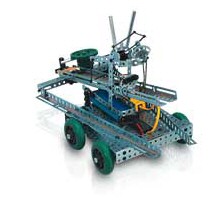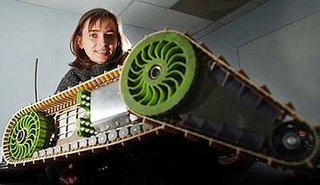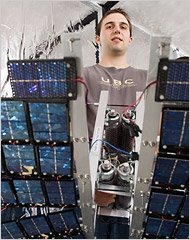Friday Link Dump
It's that time of year for me folks - exams and final projects. I'm swamped. So, here's all the links I've built up over the past few days. Enjoy. I'll be back on track in a week or two.
Air Force secret UAV."The new craft is referred to as Penetrating High Altitude Endurance (PHAE), and is thought to be able to cruise at 70,000-80,000 ft".
University of Texas researchers get $10 million USD to develop bionic arm. "The research is part of the Revolutionizing Prosthetics 2009 project sponsored by the Defense Advanced Research Projects Agency."
Frontline Robotics / Whitebox Robotics gives more details on the PC914
Japanese researchers demonstrate a legged ... er ...
Korean company knocks off the Aibo with their "Genibo" bull terrier-bot. "'Genibo' resemble bull terriers and are 30cm tall, 33.4 cm long and weigh 1.5 kg. The speech recognition feature enables the robots to understand and comply with 100 words including commands like, "come here," "sit," "wag your tail," and "do a headstand.""
LEGO Mindstorms NXT wallpaper and website icons. They're seriously pushing this community aspect. A website toolkit?
Robot Hall of Fame.
Move over Chroino and Manoi, here comes a sexy fembot to draw attention.
Live feeds of the FIRST competition this weekend.




